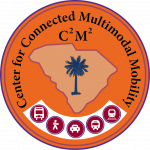The goal of this project was to aid emergency management agencies and departments of transportation in preparing for a future hurricane-related mass evacuation where self-driving, autonomous vehicles (AVs) can be utilized to assist with evacuating critical transportation need households (CTNH). A survey was developed and administered to over 1000 residents of South Carolina to capture qualitative assessments of willingness to share their future self-driving AVs in evacuation and disaster relief scenarios. Over 30% of respondents indicated they would be willing or very willing to share their self-driving AVs in these scenarios. Ordered logit models were developed to identify factors associated with this willingness. Statistically significant factors could be categorized into socio-demographics and economics (e.g., unemployed, gender, age, household size), technology adoption and comfort (e.g., use of ride-hailing services, high comfort with using AVs for deliveries), frequency of giving and/or volunteering, and current commute mode.
An ordered logit model for the evacuation scenario was applied to a synthetic South Carolina population to determine the number of AVs that would be shared by the public to assist with evacuation. A Monte Carlo simulation model was developed to test the potential of using only shared AVs to evacuate the CTNH for different scenarios of AV market penetration. The most optimistic scenario predicted that all of the demand could be covered in the not too distant future once AVs start gaining market share. With a 20% AV market penetration, approximately 85% to 90% of the CTNH could be evacuated. Lastly, the experiment results indicated that an AV market penetration of 30% to 35% (depending on the scenario considered) was sufficient to evacuate all CTNH requiring evacuation assistance.
*Additional data available upon request
